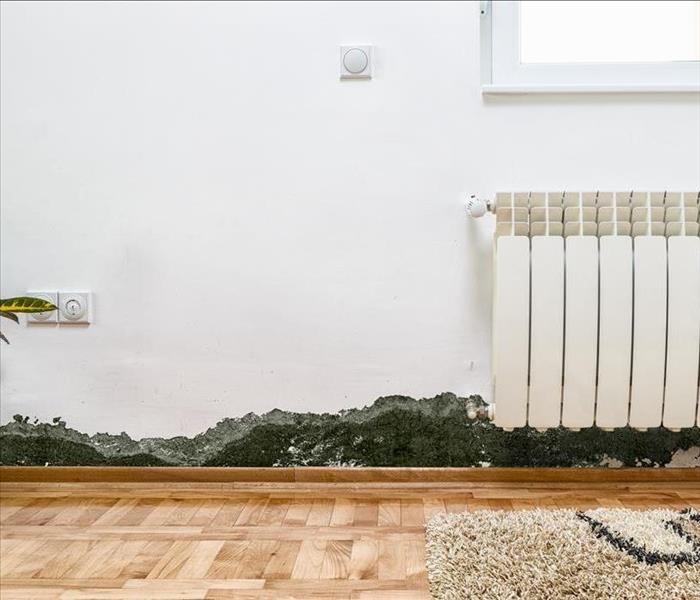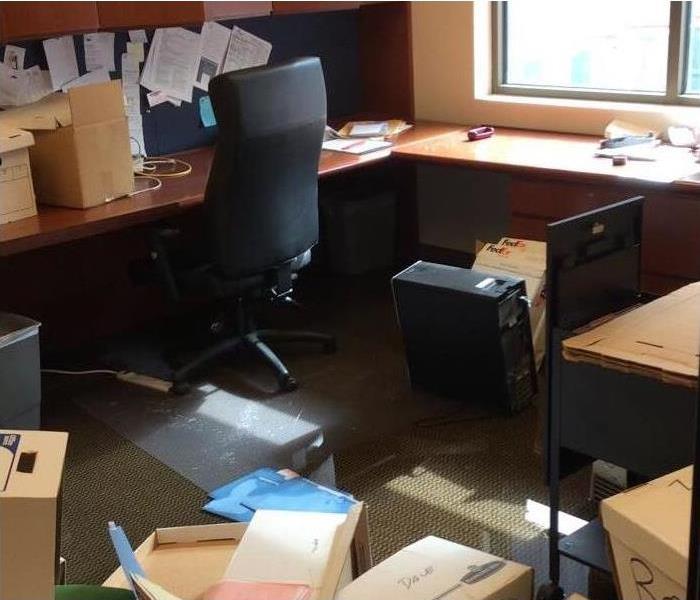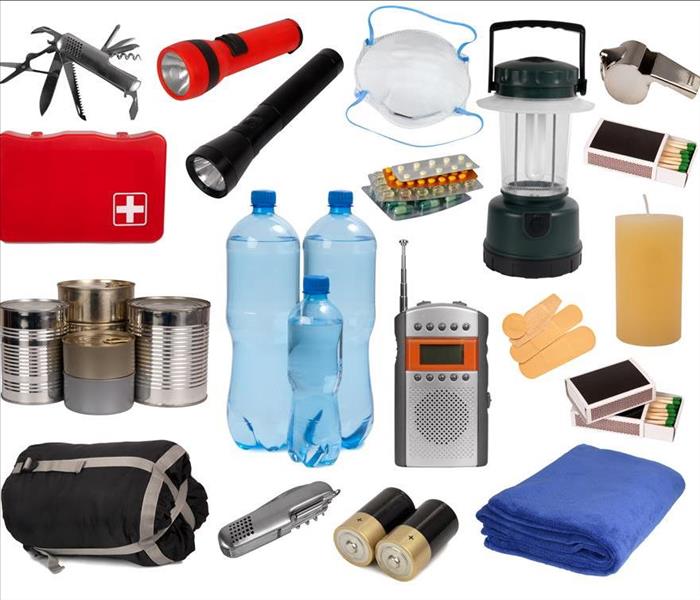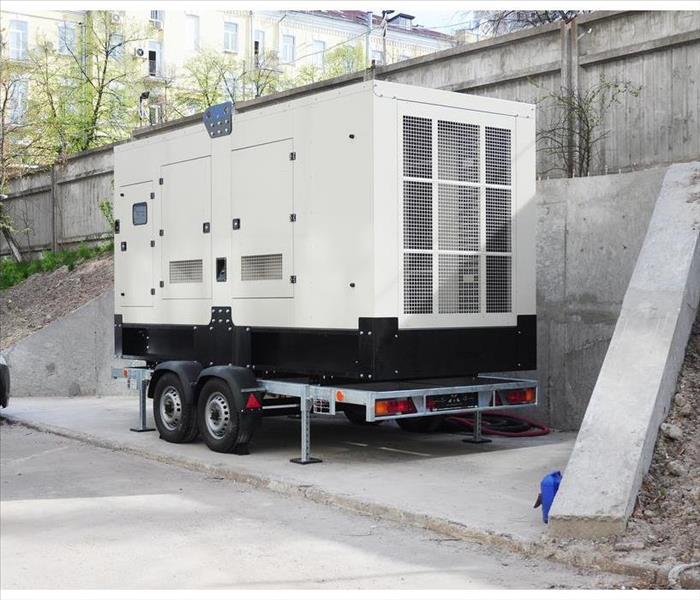Recent Storm Damage Posts
Tips for Staying Dry When It Rains | SERVPRO of Downtown Las Vegas
11/21/2023 (Permalink)
 Are you left dealing with the aftermath of water damage to your business? SERVPRO of Downtown Las Vegas is here to help. Call us today!
Are you left dealing with the aftermath of water damage to your business? SERVPRO of Downtown Las Vegas is here to help. Call us today!
The rain can fall fast and furious around here when it does come down. While we may not see the number of rainy days that the rest of the country does, each rainstorm we get can cause significant issues for our community.
In addition to flash floods and slick roads, water damage is a common occurrence because many of us aren’t prepared for the incoming weather!
Knowing what to do to get your home or business ready as soon as a storm is in the forecast can help you avoid serious water damage issues.
Preparing Your Space
If you have a large outdoor area on your property or you own a business that has a large outdoor seating and entertainment area, consider shutting it down early and getting it ready for the elements. Pull cushions inside, tie down tables and chairs and get anything inside that is fragile and could be damaged by the rain.
You should also make sure that your gutter system, downspouts and rain chains are set up and ready to go. If the rain does start falling faster than you anticipated, you need to be able to rely on your gutter system to carry the water down and away from your property in an efficient manner.
Any clogs or blockages can lead to water pouring over the side of your building that will settle down into your foundation, and perhaps, your basement.
Securing Your Property
If you have the time to check your roof for structural issues, grab a ladder and do some investigating. Oftentimes water damage occurs solely because there was some sort of unaddressed home damage that was already there. Look for broken shingles or any obvious gaps or cracks that could let rain inside.
If you are a business owner, consider adjusting any of your plans if you have any activities or events happening in the lower levels or basement of your building. You should also consider rebooking any guests who have rooms on the lowest level to higher ones just to be on the safe side. Flooded basements and rain leaking down the wall is not a good look for anyone, even if it is not your fault.
Where We Come In
Rain has a mind of its own and can cause widespread water damage immediately. If you discover significant water damage in your home or business after the storm passes, give us a call right away. We are trained to dry out your home quickly and address repairs just as fast.
We know that the longer standing water sits on your property, long-term structural issues and mold infestations become more likely. Our restoration team will be able to handle every aspect of your recovery from the initial water extraction to the final drywall and carpet repairs. We will have your space back to normal in no time at all.
Water damage should always be cleaned up quickly. Contact SERVPRO of Downtown Las Vegas for immediate assistance
How to Safely Enter and Inspect a Building After a Storm
6/21/2023 (Permalink)
After a storm disaster, it is crucial to approach building inspection with utmost caution and prioritize safety. Whether it's a hurricane, tornado, or severe thunderstorm, the aftermath can leave buildings damaged and potentially hazardous. As disaster restoration experts, we understand the importance of a thorough assessment while ensuring the well-being of everyone involved. In this blog, we will provide you with a step-by-step guide on how to safely enter and inspect a building after a storm disaster.
Step 1: Assess the Surroundings
Before entering the building, carefully evaluate the surroundings for any visible hazards. Look for downed power lines, unstable structures, leaning trees, or other objects that could pose a risk. Keep a safe distance from these hazards and report them to the appropriate authorities or utility companies if necessary.
Step 2: Ensure Personal Protective Equipment (PPE)
Wearing appropriate personal protective equipment (PPE) is essential to safeguard yourself during the inspection. Prior to entering the building, ensure you have the following PPE:
- a) Hard hat: Protects your head from falling debris or objects.
- b) Safety goggles: Shield your eyes from dust, debris, and potential chemical exposure.
- c) Gloves: Provide hand protection and enhance grip while handling objects.
- d) Dust mask or respirator: Guard against inhaling harmful particles, mold spores, or other contaminants.
Step 3: Turn Off Utilities
Before entering the building, it is crucial to turn off all utilities, including electricity, gas, and water. Damaged electrical systems or leaking gas pipes can pose significant risks. If you're unsure how to shut off utilities, consult with professionals or contact the respective service providers for guidance.
Step 4: Proceed with Caution
Enter the building cautiously, paying close attention to your surroundings. Watch out for weakened structures, sagging ceilings, or unstable floors. Take each step slowly and carefully, using handrails if available. Avoid damaged areas or rooms with visible signs of structural instability.
Step 5: Assess Structural Damage
Once inside, begin the inspection by assessing the structural damage. Look for cracks in walls, ceilings, or foundations. Pay attention to any noticeable shifts or tilts in the building. If you suspect severe structural damage, it is best to evacuate immediately and seek professional assistance.
Step 6: Check for Water Damage
Water damage is a common consequence of storm disasters. Look for signs of water intrusion, such as stains on walls or ceilings, soggy or warped flooring, or a musty odor indicating mold growth. Waterlogged materials should be addressed promptly to prevent further damage and mold infestation.
Step 7: Document the Damage
Take photographs or videos of the damage to document the conditions for insurance claims and restoration purposes. Capture both wide-angle shots and close-ups to provide a comprehensive record. Make detailed notes about the extent of the damage in each area, including specific areas of concern.
Step 8: Exercise Caution with Hazardous Materials
Be mindful of potentially hazardous materials that might have been displaced or exposed during the storm. These could include asbestos, lead-based paint, or chemicals from household or industrial sources. Avoid direct contact and seek professional assistance if you suspect the presence of hazardous materials.
Step 9: Evaluate Electrical Systems
If the electricity has been turned off, avoid turning it back on until a qualified electrician has inspected and certified the safety of the electrical system. Damaged electrical wiring can cause fires or electrical shocks, posing a serious risk.
Safely entering and inspecting a building after a storm disaster requires careful planning, attention to detail, and prioritizing personal safety. By following this step-by-step guide, you can safely conduct a thorough assessment.
Landslide Safety and Preparedness
1/4/2023 (Permalink)
Landslides are an unfortunate reality for many people. They can occur on steep slopes and in areas that have been affected by natural disasters or human activity. Landslides can be caused by flooding, earthquakes, heavy rainfall or snowmelt, volcanic eruptions, erosion due to poor forest management practices, or construction activities. Landslide occurrences are most likely to happen in mountainous regions where steep hillsides are common and soil moisture is abundant.
Even if you don't live in an area known for landslides you should still take precautions because it's not uncommon for people living near potential slide zones to experience one unexpectedly — especially during the spring thawing season when rapid changes in temperature can cause ground cracking which may trigger a landslide downslope from your house!
Warning Signs for Landslides
- Rapid swelling or cracking of the ground.
- Changes in water flow and level.
- Sudden appearance of cracks, fissures, or bulges on the surface.
- Steep slopes showing new movement after heavy rain.
If you think you’re at risk for landslides, there are several things you can do to prepare. You can check for signs of past landslides, create a map showing the location of your property and any nearby slopes prone to movement, and consider moving building materials (including furniture) away from the edge of steep slopes.
How to Prepare for a Landslide
To stay safe during a landslide, there are three things you can do:
- Get an evaluation of your property on the ground.
- Build far from natural erosion valleys, drainage channels, mountain edges, steep slopes, or steep slopes.
- Discover your region's emergency response and evacuation strategies. Create an emergency plan for your family or business on your own.
The most important thing you can do is to prepare for a landslide. The more prepared you are, the less likely it will be that your home or business will be damaged.
How to Respond to a Landslide
- Remain awake and aware. People often die in debris flows while they are asleep. For warnings of heavy rain, tune in to a NOAA Weather Radio or a portable, battery-operated radio or television.
- If it is safe to do so, think about evacuating if you are in a location where landslides and debris flows are a possibility. Keep in mind that driving during a severe thunderstorm might be dangerous.
- If you're close to a stream or channel, keep an eye out for any rapid changes in water flow—such as a switch from clear water to muddy water—or changes in terrain (elevation) on either side of the creek bed.
- If there is no place else for shelter and/or evacuation is not possible, stay away from the slide area when rockfall begins but avoid direct contact with wet rocks because they may be extremely slippery until they dry out.
What to Do After a Landslide?
- Avoid the area around the slide. There could be a risk of more slides.
- For the most recent emergency information, tune in to local radio or television stations.
- Without going into the area directly affected by the slide, search the region for any injured or trapped people.
- Help a neighbor who might need particular help, such as a newborn, an old person, or a person with a disability.
The best way to prepare for landslides is to be aware of the dangers and take proactive measures. By doing so, you can help your property and those around you avoid costly damages and even injury. If a landslide does occur, respond quickly to minimize damage.
What To Know About Storm Damage and Flooding
8/30/2022 (Permalink)
 A flooded office in Las Vegas, NV
A flooded office in Las Vegas, NV
Storm Damage and Flooding
It’s important to know that storm damage and flood damage are different things although both can affect your business. Here are a few things you may want to know about these types of damage.
1. Both Can Occur Multiple Ways
Both flooding and storm damage can occur a number of ways. Storms can bring high winds, heavy rain, hail, and freezing temperatures all of which can lead to damage. Flooding can be caused by a storm too, but can also occur from a pipe break, sewer backup or overflowing drainage. Understanding that these are two separate things will help you be prepared for these event to happen regardless of if the weather is stormy.
2. Both Should Be Handled Quickly
Both storm and flood damage should be handled quickly. This means removing the water so it can’t soak in, and thoroughly drying the area. It’s also important to make sure you know the source so that you can mitigate future problem. Fortunately, a restoration service can help.
3. A Restoration team Can Help
Contacting a local water damage restoration service is an important part of the repair process as these professionals are trained to deal with a variety of water damage types, including storm caused damages and flooding. They can access the damage, make repairs, and restore the property to pre-damage conditions. These professionals can also help with item cleaning, item storage during restoration, and may even be able to repair electronics and help back up important files. Many restoration professionals can also work directly with your insurance agent.
Remember that storm damage and flood damage are different things and business in Las Vegas, NV might be affected by one without the other, or both at the same time. Each type of damage can occur a number of ways and in both cases the damage should be repaired as quickly as possible. Fortunately a restoration service can help.
3 Important Flood Safety Tips
7/23/2022 (Permalink)
 Make an emergency kit.
Make an emergency kit.
Flood Safety Tips
When there is severe weather in Showboat, NV, it is important to stay safe. If you wait until an emergency occurs, it may be too late, so you should make sure that you are prepared beforehand. Here is some flood safety advice that you should keep in mind when it is storming or flooding.
1. Make an Emergency Kit
If you know that there may be a storm in the area, you should gather a few things in case it becomes an emergency. It is possible that the power may go out, so always keep a flashlight and extra batteries in your kit. A radio can be helpful as well, so you can keep track of the weather. Always include canned foods and bottled water and store these in a safe location.
2. Avoid Flood Waters
When considering flood safety, it is a good idea to stay inside, as driving can be dangerous. If your home has more than one level, you should stay on the upper floors in case the waters enter the house. These waters are considered Category 3 or black water which means they are highly contaminated. You should avoid coming into contact with them and never consume any food or beverages that have been in the water.
3. Relocate if Necessary
While one of the most important safety tips is to avoid driving on a flooded road, there are some cases when you may need to evacuate your home. Ideally, this would be done before the streets become unsafe for travel. Keep updated with the news to determine if this is something that you will need to do.
During a storm, flood safety is an important thing to consider. Use these tips to ensure that you and your family are prepared for any emergencies. If your home is damaged during the disaster, contact an emergency restoration service to perform mitigation and repairs.
2 Types of Commercial Generators and Their Life Expectancies
4/21/2022 (Permalink)
 The key to a long life expectancy and avoiding generator problems is to get the right one for your business.
The key to a long life expectancy and avoiding generator problems is to get the right one for your business.
Two Types of Commercial Generators
The lifespan of your generator for your business in Fremont Street, NV, depends on many things. One of these factors is the fuel that is used to power the machine. Here are the two most common types and their life expectancies.
1. Diesel Powered
A standard diesel generator can last anywhere from 10,000 to 30,000 hours. To reach the higher end of this spectrum, you need to engage in regular preventative maintenance. You will find that adding a monthly examination will help you identify problems and take action. Typically, you will also change the oil, check the water levels, and replace your filters every year.
Additionally, if you want your machine to keep running while you wait on the storm cleanup crew, you should get the right size for your building. If it is too large, it can be plagued with wet stacking and carbon buildup. Too small, and you can put too much strain on the engine. Once you reach the end of its life, you should consider replacing it rather than going for an overhaul. This is because newer technology can produce a more efficient engine with a longer life expectancy.
2. Natural Gas Powered
Another type of generator that is growing in popularity is powered by natural gas. However, these operate at higher RPMs, meaning more wear and tear on the engine over time. Therefore, these tend to have shorter life expectancies. Typically, these can last around 3,000 hours in a commercial setting. This makes them good for businesses that are not in danger of losing power due to storms often.
The key to a long life expectancy and avoiding generator problems is to get the right one for your business. This means choosing between a machine powered by diesel or natural gas, picking the right size for your business, and using proper maintenance techniques to extend its life.
After the Storm: What To Expect During the Restoration Process
3/24/2022 (Permalink)
 SERVPRO of Downtown Las Vegas is the best in the restoration business.
SERVPRO of Downtown Las Vegas is the best in the restoration business.
Storm Restoration Process
It can be difficult to comprehend the type of damage a violent storm can do to your Downtown, NV, home. Flooding, damaged building materials, and soaked furniture are just a few problems you may be dealing with in the wake of a storm. A professional flood damage company can help your home recover. Knowing what to expect during the process, from tear-out services to water drainage, may help you feel more confident about the outcome.
Storm Mitigation
When a powerful storm causes water damage to your home, it is important to contain the water. Preventing its spread can help reduce these future problems:
- Rapid mold growth
- Swelling and warping of wood
- High humidity
When a storm damage service arrives, they will likely act to prevent floodwaters from spreading to dry areas. Rooms that contain electronic components, such as fuse boxes or thermostats, may be drained first to prevent long-term damage to these systems.
Water and Debris Drainage
A storm restoration service will probably bring in a variety of machinery to drain away flood water. When outdoor flooding invades your home, it may bring in not only water, but debris that includes dead leaves, mud, and garbage as well. Trash pumps and portable sump pumps can drain away this waste so your flood technicians can continue with tear-out services and other restoration actions.
Flood Cuts and Drywall Replacement
Because many building materials are porous, such as drywall, they can absorb and retain flood water. This can cause rotting and damage of interior wall components, including insulation. Your storm damage and restoration service techs may perform a flood cut into the drywall about a foot above the water line to assess such issues and to gauge what kind of repairs might be needed.
When violent storms impact Downtown, NV, it can be difficult to know what to expect once repairs begin. Learning about tear-out services and other restorative actions may help give you peace of mind about the future state of your home.
 Are you left dealing with the aftermath of water damage to your business? SERVPRO of Downtown Las Vegas is here to help. Call us today!
Are you left dealing with the aftermath of water damage to your business? SERVPRO of Downtown Las Vegas is here to help. Call us today!





 24/7 Emergency Service
24/7 Emergency Service



